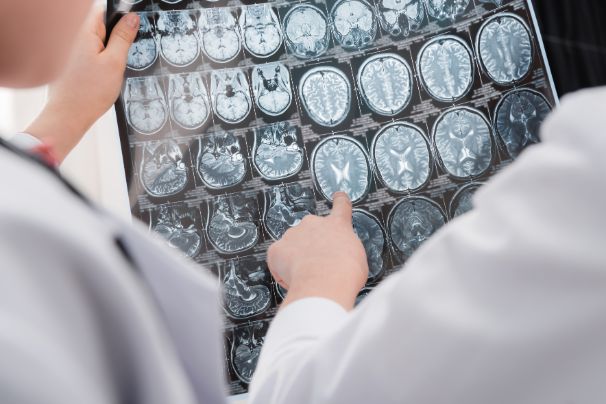A hemorrhagic stroke happens when blood vessels in the brain rupture and bleed, blocking or starving brain cells of oxygen. It is less common than ischemic stroke, but it can cause severe symptoms and death. Hemorrhagic stroke can be caused by many things, including high blood pressure, a brain aneurysm or arteriovenous malformation, drug abuse and migraine headaches with auras (or “aura-type” migraines). People who have a history of these conditions are at higher risk for hemorrhagic stroke.
Hemorrhagic stroke is more likely to be fatal than ischemic stroke, even if you receive emergency treatment within three hours. That’s why it is important to understand the symptoms and seek prompt medical care if you think you or someone you know has a stroke.
The symptoms of a hemorrhagic stroke are similar to those of ischemic stroke, and may include seizures, loss of consciousness or changes in how you feel, move or think. Symptoms depend on where the stroke occurred in the brain and how much damage was done to brain cells.
Usually, symptoms start suddenly and get worse quickly. They may be severe and get worse as the bleeding continues. They can include a sudden, severe headache, known as a thunderclap headache, which is usually followed by vomiting or neck stiffness. Other symptoms may include loss of balance or coordination, a sudden trouble with walking or standing up, numbness and tingling and changes in how you think.

Your doctor will ask about your past health and symptoms and do a physical exam. They will order imaging tests, such as a CT scan or an MRI, to check for bleeding in or around your brain. They will also order other tests to help diagnose the type of stroke and find out what caused it, such as a lumbar puncture or an electroencephalogram.
The first step of treatment for a hemorrhagic stroke is to stop the bleeding and relieve pressure. This can be done by surgery, called a craniotomy. It involves cutting out a section of the skull to reduce pressure on the brain and sometimes involves repairing or treating an aneurysm. Other treatments include medication to control seizures and swelling, infusion of fluids to maintain a normal blood volume and clotting factors and surgery to repair an aneurysm or hemorrhage.
After the emergency treatments are completed, your doctor will focus on preventing further strokes and long-term complications from happening, such as a second hemorrhagic stroke or a complication like a brain tumor. They will also help you regain as much function and independence as possible through rehabilitation.











